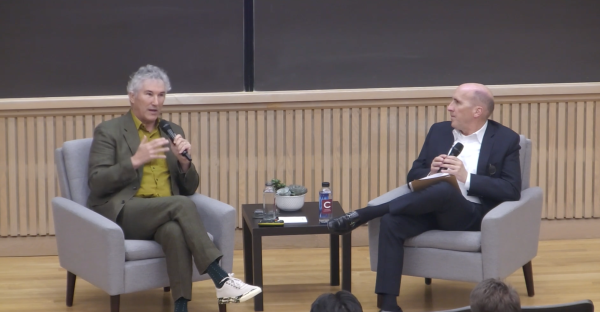In “House” Journalism Teacher Sparks Newspaper Creativity

Emily GravettMaroon-News Staff
The Maroon-News Managing Editor and senior Jennifer Chapski wanted to hold a seminar for Maroon-News staff writers since she started working on the staff as a first year. This week, from Sunday to Friday, her dream came true. “We felt bad having to make such huge edits or to refuse to print our staff writers’ work, when we couldn’t give them really thorough instructions,” Chapski said. A seminar seemed like the perfect idea. However, the editors needed the administration’s support first. “I was so worried that they weren’t going to give us the money just because it was so unusual,” Chapski said. Ultimately, the administration was enthusiastic about the idea. “This year, in particular, the administration at Colgate has been immensely helpful in terms of supporting us, in trying new things and in getting funding for us,” Chapski said. She believed that the administration was so supportive because the seminar fit in with a number of other projects that the Maroon News is taking on, including updating technology and improving relationships with local newspapers. “Basically, this whole year is about upping the ante,” Chapski said. Luckily, Chapski knew of the perfect candidate to help, her favorite high school teacher, Jeff House, who also happened to be a professional lecturer. He brought his own techniques and advice to the seminar and also addressed the editorial staff’s specific concerns. The instruction began Monday at 5 p.m. in the Ho Lecture Room. Primarily, House wanted to convey the importance of focus and variety in all journalistic aspects. “Focus is what distinguishes journalism from other writing,” he said. House also delved into more specifics. He shared his thoughts about the important elements of writing, including anecdotes, quotes, details and facts. House also covered methods of research such as memory, close reading, observation, hands-on, interview and recorded source, stressing that “research is the key to journalism.” House spent a lot of time on the importance of the interview. “Without a good interview, you do not have a good story,” he said. Staff writers learned several tips about how to conduct a good interview. House suggested that interviewers sit forward, nod their heads, make eye contact and provide verbal affirmation and encouragement. “A good interview is like a conversation,” he said. “It shouldn’t feel like an interview.” House then actually showed his audience good technique by staging a mock-interview. “That’s part of my philosophy,” House said. “If I am going to talk to my kids about interviewing, then I’ll do it myself.” House proved himself again in round two Tuesday night, when the group met from 5 to 8 p.m. again, in Lathrop. This night, he focused mainly on photography and layout, making sure the staff understood the importance of focus. “Tightening creates tension, a kind of drama,” House said. This technique applies to every aspect of journalism – the writing as well as the photography and the layout. After the staff critiqued photos and layouts, House then staged another mock interview, this time with the whole staff acting as the interviewers. “So much of education is unfortunately lecture-based,” he said. “In an ideal world, we wouldn’t even have walls. We would just go out and do things, and have it be pure hands-on.” The next day, Wednesday, House met with Maroon News writers individually to discuss articles and newspaper-related concerns. He performed a shorter lecture that evening, only about an hour, focusing on the legal side of journalism. On Thursday, House helped the editors lay out the newspaper for publication and distribution on Friday. He hoped that they will finish laying out the issue a bit earlier than usual, as the staff is notorious for seeing the sun rise on Friday before finishing layout. Finally, on Friday, House will say a few closing words before leaving to back to his home in Northern California. “He doesn’t actually teach anything; he just kind of helps us realize what we already know,” Chapski said. “I don’t know how much teachers really teach. I think that students know and understand a lot more than we give them credit for,” House said.




